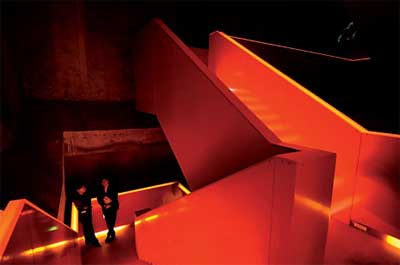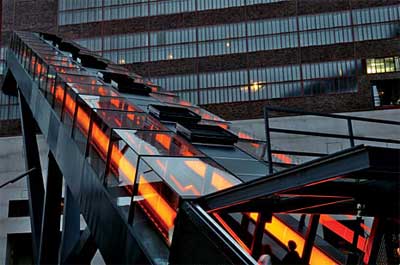Built in the ‘30s according to plans by Fritz Schupp and Martin Kremmer, as part of one of Europe’s largest coal-mining complexes, the Zollverein Kohlenwäsche building’s intended lifespan was of 20 years – the amount of time it was expected to take to exhaust the vein of coal. Instead, after renovation by OMA, and after being granted UNESCO World Heritage protection, the site situated in Essen, Germany, is now open to the public.

“The Kohlenwäsche wasn’t designed to be entered by people but by coal, so some parts were so crammed with machinery that it was impossible to access them. To make the building’s seven floors accessible we removed some of the coal-washing machinery and inserted a steel staircase that works as a vertical connector,” explains Floris Alkemade, at OMA. “Paradoxically, the way the building works hasn’t changed that much – just as coal used to be taken to the top of the building by conveyor belts and then moved downwards as it went through the purification process, today visitors are elevated to the top floor by the escalator, and from there they are led downwards from floor to floor by the staircase.â€?
Using technology previously employed in Seattle Public Library, the treads and sidepanels were coloured orange; the result, especially at night-time, is reminiscent of a river of molten steel. With a span of 24 metres, it is the longest free-standing escalator in Europe. The interior staircase is fabricated in unpainted steel; the illusion that it is coloured bright orange is created by the tinted strip lights set into the side-panels.

More images of the site: Zollverein and Thomas Mayer.
Via Domus.
